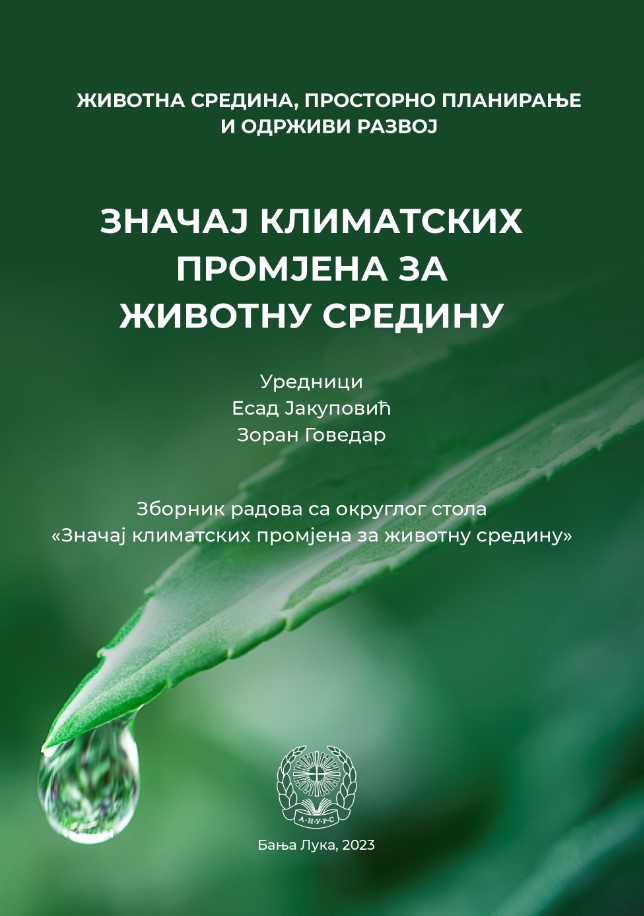Climate change and the environment - trends and possible consequences
DOI:
https://doi.org/10.7251/ZSPPOR2301001TKeywords:
Climate change, environment, climate trends, climate projections, Republika Srpska, Bosnia and HerzegovinaAbstract
Climate change is one of the greatest challenges of modern humanity. It is evident that climate change during the last two decades have affected our areas very intensively. This mainly refers to the increase in air temperature throughout the year, but also in all seasons. The increase in air temperatures during the winter caused a smaller number of days with the appearance of snow, but also days when the snow cover remains on the ground. In addition, climate change has caused and disrupted the normal distribution of precipitation in the form of rain in the territory of the Republic of Srpska and Bosnia and Herzegovina, as well as in the region of Southeastern Europe. It is interesting that over the past two decades, the number of days without precipitation has increased, as well as the number of days with intense precipitation. This is precisely what caused the increasingly frequent and intense occurrence of droughts as well as river, torrential and urban floods in the territory of Bosnia and Herzegovina. Unfortunately, the consequences for the population, their lives, infrastructure and property are increasing. Climate models indicate that in Europe, temperature and precipitation trends in the 21st century will continue in the same direction as during the second half of the 20th century. This means that the temperature will continue to rise the most in the winter season in Northern Europe, and during the summer season in Southern Europe. On the other hand, precipitation shows greater regional and seasonal variability, with the precipitation increasing inNorthernEurope anddecreasing inSouthern Europe.Also, based on previous research, an increase in extreme events in Europe is projected, especially in the form of heat waves, droughts and intense rainfall. There is an evident tendency to increase the number of heat waves and intense precipitation based on climate models. Such trends and changes point to a serious problem of more frequent and intense occurrences of drought and water deficit, and to the need for more significant integration of climate change into planning and strategic documents. Certainly, future research is also necessary, where it is necessary to include projections of climate indices, especially temperature extremes and intense precipitation that can cause the occurrence of fluvial and torrential floods.

